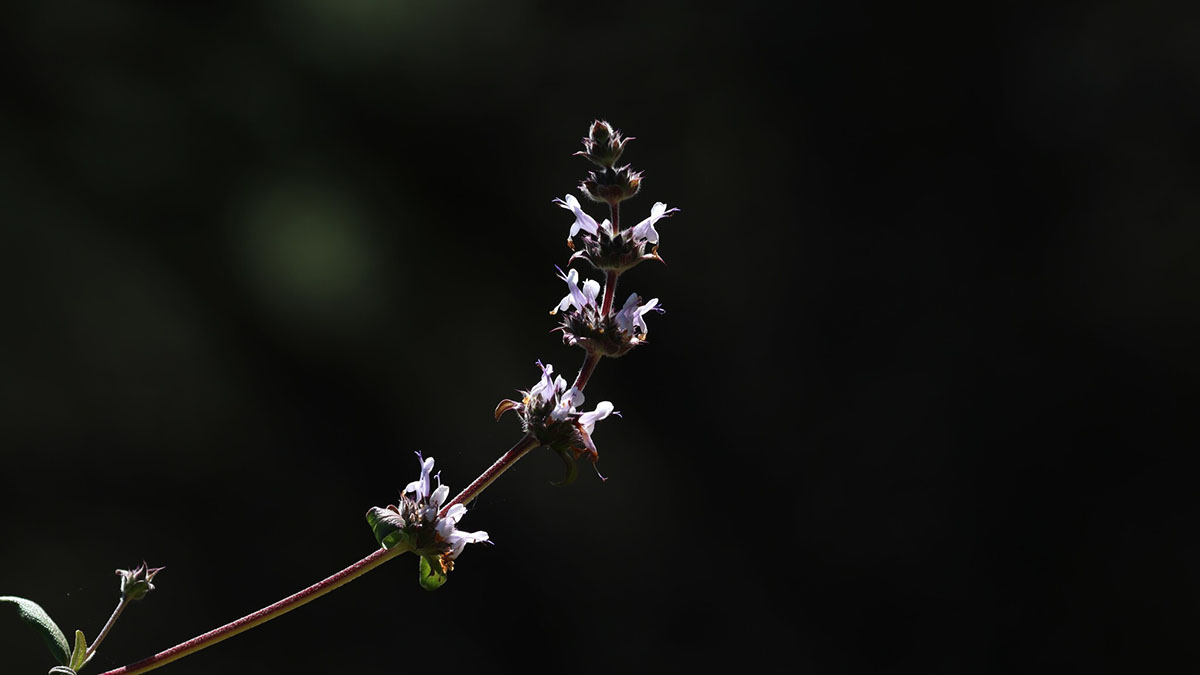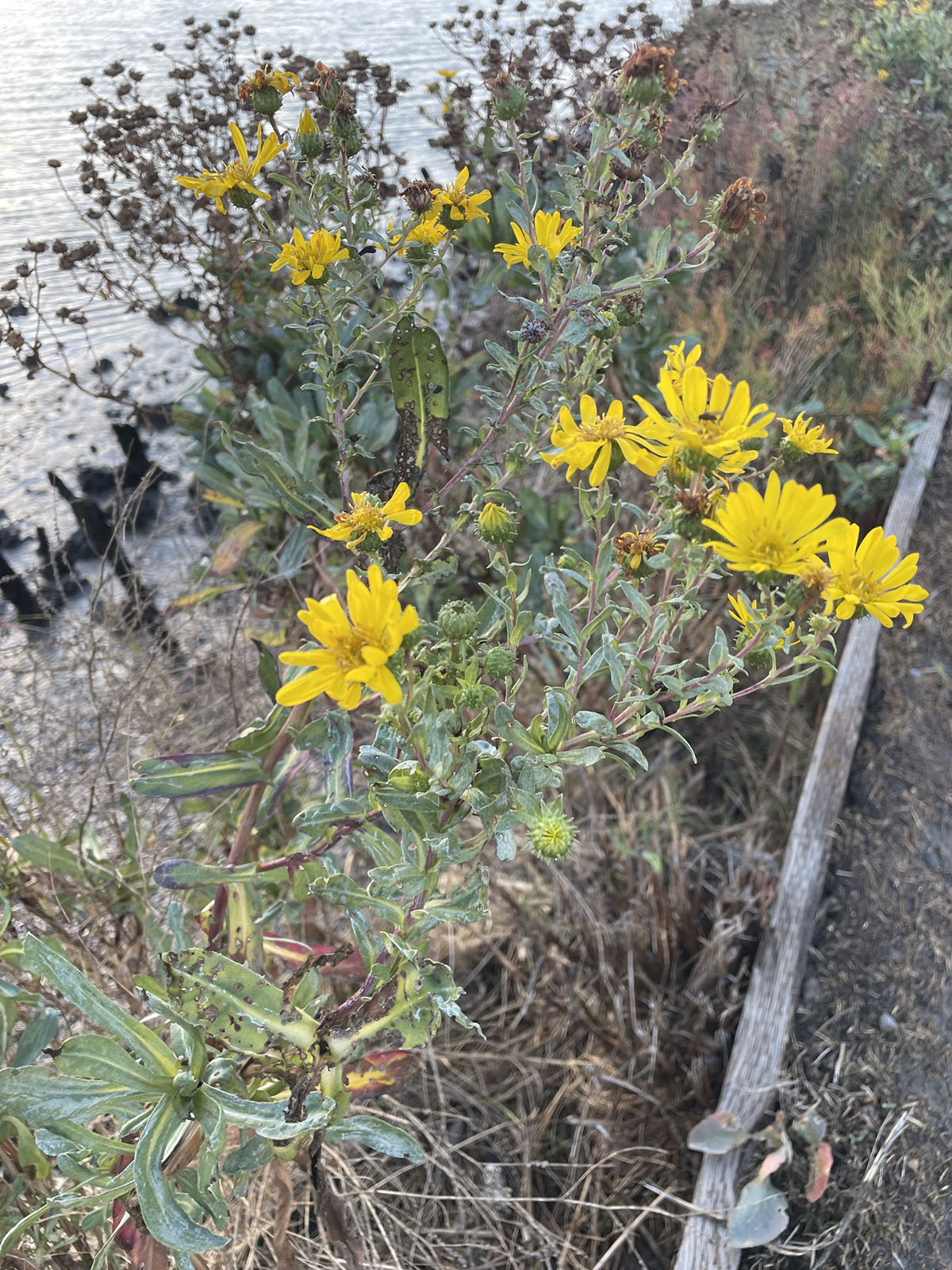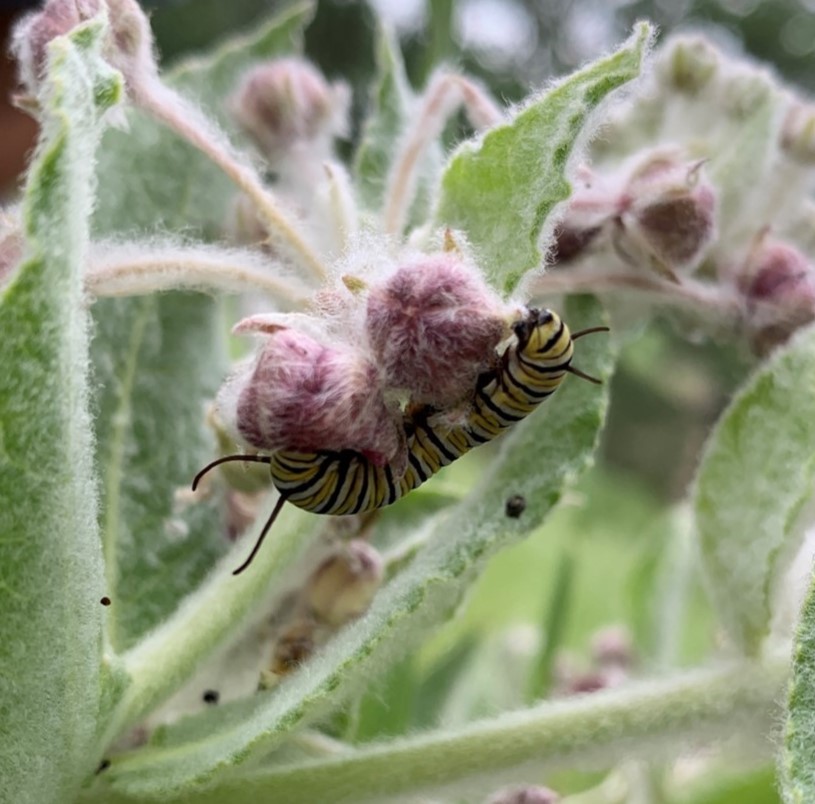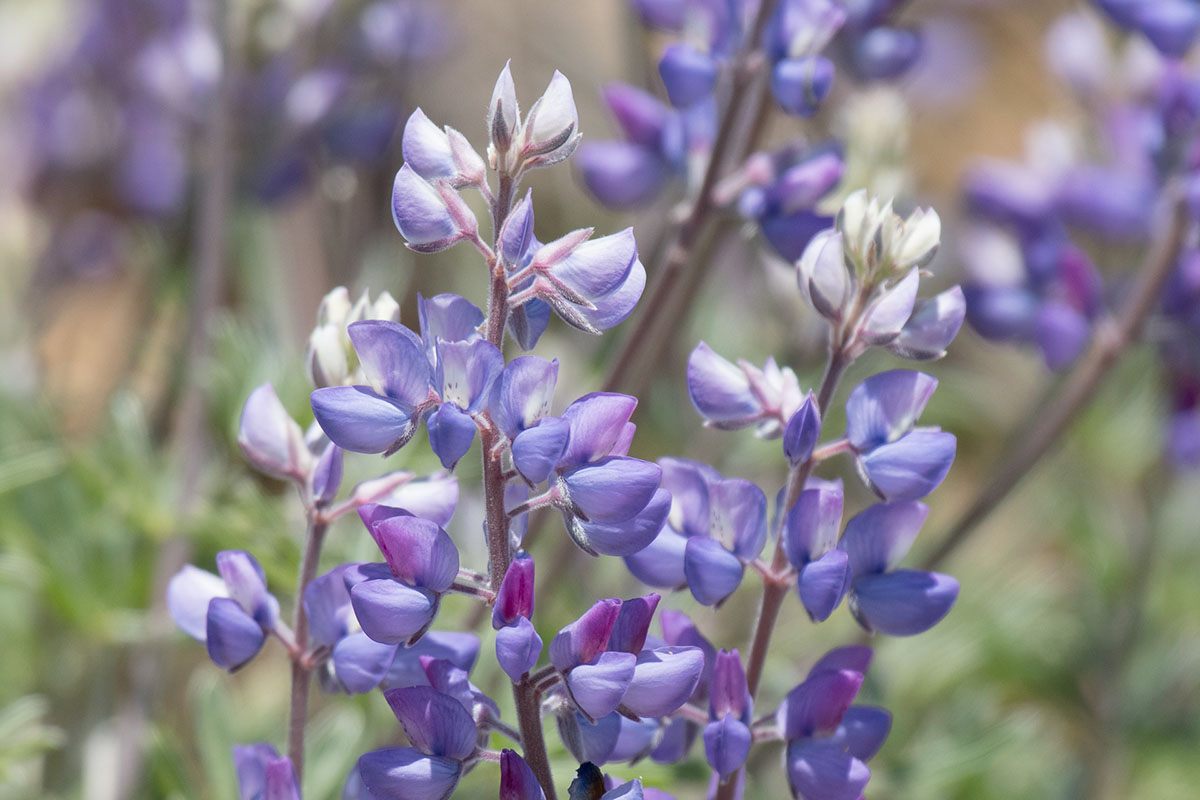
It’s planting season! November, December, and January are the best months of the year to plant native plants in the Diablo region (and much of California), so that the plants get their roots well established before the hot and dry months.
But not all native plants are equal—some provide incredible habitat for birds, butterflies, bees, and other wildlife. Which ones should you consider for your garden?
Here are 19 powerhouse plants (sometimes called keystone species) that would be a fantastic choice if you live near Mount Diablo or in the East Bay. (Some of these plants would also be excellent in other parts of California as well.)
Save Mount Diablo staff and volunteers have planted many of these plants at our pollinator gardens and other habitat restoration sites at Big Bend, Mangini Ranch Educational Preserve, Irish Canyon, Ang, and Marsh Creek 1, 4, 6, and 7.
1. Sunflower

California sunflower. Photo: Dan Fitzgerald | CC BY-NC
Sunflowers (of the genus Helianthus) are the most important genus for native specialist bees in the Bay Area.
Some bees can feed their young on pollen from many types of plants, but others require specific plants: these are the specialist bees.
A scientist named Jarrod Fowler studied specialist bees across the western United States. Helianthus provides pollen to a whopping 100 species of specialist bees (60 in California), which is the largest number of species of specialist bees that rely on a native plant in the western US.
Mount Diablo is home to three native species of Helianthus:
- Common sunflower (Helianthus annuus), which is an annual
- California sunflower (Helianthus californicus), a perennial
- Chaparral sunflower (Helianthus gracilentus), also a perennial
2. California Fuchsia (Epilobium canum)

California fuchsia. Photo: Sairus Patel | CC BY-NC
Hummingbirds love this plant. It also blooms in the fall, when less nectar from other sources is available for them to eat.
3. Currant

Chaparral currant. Photo: Andrea Kreuzhage | CC BY-NC
Chaparral current (Ribes malvaceum) provides nectar to hummingbirds and bees in the fall and winter, when not much else is blooming. It is also a host plant for up to 76 species of butterflies and moths.
Closer to the coast in the Bay Area, pink-flowering currant (Ribes sanguineum var. glutinosum) is a similar excellent choice.
4. Silver Bush Lupine (Lupinus albifrons)
This lupine is a host plant for up to 49 species of butterflies and moths; it also supports bees, birds, and even bats.
5. California Goldenrod (Solidago velutina californica)

Butterflies love California goldenrod too. I think this butterfly is a gray hairstreak. Photo: Laura Kindsvater
This plant is beloved by small native bees. Plant it, and they will come! I have seen many different small native bees including green sweat bees on this plant in my garden. Its genus, Solidago, supports 59 types of specialist bees in the western US.
6. Manzanita

Mount Diablo manzanita. Photo: Dan Fitzgerald | CC BY-NC
Manzanitas bloom in the winter, providing a critical source of nectar for bees. Manzanitas are also the host plant for 68 species of butterflies and moths.
Mount Diablo is home to at least five species of manzanitas:
- Contra Costa manzanita (Arctostaphylos manzanita laevigata)
- Mount Diablo manzanita (Arctostaphylos auriculata)
- Great-berried manzanita (Arctostaphylos glauca)
- Eastwood manzanita (Arctostaphylos glandulosa glandulosa)
- Arctostaphylos tomentosa crustacea
7. Oak

Students reflect on nature under the oak trees at our Mangini Ranch Educational Preserve. Photo by Mary Nagle
Oaks provide food and habitat for an unbelievable number of wildlife species. For North America, they are the best native to plant in support of butterflies and moths.
On Mount Diablo, we have more than eight types of native oaks, including
- blue oak (Quercus douglasii),
- valley oak (Quercus lobata),
- coast live oak (Quercus agrifolia),
- interior live oak (Quercus wislizeni),
- canyon live oak (Quercus chrysolepis),
- black oak (Quercus kelloggii),
- leather oak (Quercus durata), and
- scrub oak (Quercus berberidifolia).
8. Narrow-Leaved Goldenbush (Ericameria linearifolia)
The genus Ericameria supports 93 species of specialist bees that are native to the western US!
9. California Lilac

Jimbrush (Ceanothus oliganthus var. sorediatus). Photo: Terry Gosliner | CC BY-NC-SA
California lilac (Ceanothus) species are the hosts for 117 species of butterflies and moths.
10. Black Sage

Black sage. Photo: Kendall Oei | CC BY-NC
Black sage (Salvia mellifera) provides food for caterpillars, butterflies, bees, and bats. It is exceptionally well adapted to very dry conditions.

Black sage with a western tiger swallowtail butterfly. Photo: Richard Breisch | CC BY-NC

Black sage with bumblebee. Photo: Richard Breisch | CC BY-NC
11. Gumplant

Great Valley gumweed or gumplant. Photo: debattaway | CC BY-NC
Gumplant blooms into the fall, which makes it essential for pollinators. Its genus, Grindelia, supports 84 species of specialist bees in the west.
12. Coyote Mint (Monardella villosa)
Bees and butterflies love coyote mint!

Coyote mint with yellow-faced bumble bee (Bombus vosnesenskii). Photo: Irene | CC0
13. Blue Elderberry (Sambucus mexicana)

Blue elderberry. Photo: Susan Fawcett | CC BY-NC
Blue elderberry supports 30 species of butterflies and moths, plus bees, birds, and bats.
14. Pink Honeysuckle (Lonicera hispidula)

Pink honeysuckle. Photo: Keir Morse | CC BY-NC-ND
Looking for a native vine for your garden? This one provides food for 30 species of butterflies and moths, plus bees. Birds love the berries.
15. Buckwheat (Eriogonum)

California buckwheat (Eriogonum fasciculatum) with a bee feeding on its nectar. Photo: Andrea Wuenschel | CC BY-NC
Buckwheat species support 56 species of moths and butterflies, plus native bees.
16. Penstemon

Penstemon heterophyllus. Photo: Eric Koberle | CC BY-NC
Thirty species of butterflies and moths can lay their eggs on foothill penstemon (Penstemon heterophyllus).
Mount Diablo is also home to scarlet bugler (Penstemon centranthifolius).

Scarlet bugler. Photo: Amber Nichols | CC BY-NC
17. California Rose (Rosa californica)
California rose flowers attract bees and butterflies, and it is the host plant for 95 species of butterflies and moths. Birds and other animals eat rose hips, the plant’s fruit.
18. California Sagebrush (Artemisia californica)

California sagebrush. Photo: Sarah Lizette | CC BY-NC
This plant feeds birds, caterpillars, butterflies, and bats. It has a wonderful scent.
19. Willow

Students planting willow trees at our Curry Canyon Ranch property. Photo by Mary Nagle
If you have access to a wet area that is along a creek or pond, plant willows. In our region, they provide food and habitat for even more species of butterflies and moths than do oaks (willows are number 1, oaks are number 2), as well as for many other wildlife species.
Bonus: Milkweed

Monarch caterpillar on milkweed. Photo by Haley Sutton
Milkweed isn’t a keystone species, but it is the famous host plant for the monarch butterfly, and it is also the host plant for another butterfly, the queen butterfly. Some bees also like the nectar, and the plants also support birds.
Mount Diablo has two native species of milkweed:
- Narrowleaf milkweed (Asclepias fascicularis)
- California milkweed (Asclepias californica)—this species is hard to find in nurseries, but check Mariposa Nursery for starts and seeds, which they can ship or mail to you. I ordered some seeds, and when they arrived, the packet said something like “Contra Costa seed source,” which I was happy to see because I live in Contra Costa County.
There are many other native plants that are important keystone species too. Check out the section on additional resources below for more information. Happy wildlife gardening!
Native Plant Nurseries
- The Watershed Nursery
- Native Here Nursery
- Linda Vista Native Plants
- Yerba Buena Nursery
- Find others on Calscape. You can search and find which nurseries commonly carry the plant you are looking for. Ask the nursery if their plants are grown without pesticides (which could kill the pollinators you are trying to support). Pesticides can linger up to six years and sometimes even be transmitted to other plants in your garden.
Additional Resources for Creating a Wildlife Garden
- Sign up to plant and care for native plants at Save Mount Diablo’s pollinator gardens and restoration sites for our Diablo Restoration Team
- Calscape (search for which plants are native to your neighborhood and what types of wildlife they support; find more native plant nurseries)
- Bringing Back the Natives keystone species guides
- California Native Plant Society planting guides for the East Bay and other parts of the Bay Area
- The Flowering Plants and Ferns of Mount Diablo, California by Dr. Barbara Ertter and Dr. Mary L. Bowerman
- Native bee specialist pollen needs per Jarrod Fowler (compiled for our area by the California Native Plant Society, Yerba Buena Chapter)
- Jarrod Fowler website: Specialist bees in the western US
- Nature’s Best Hope: A New Approach to Conservation that Starts in Your Yard by Doug Tallamy
- Bringing Nature Home: How You Can Sustain Wildlife with Native Plants by Doug Tallamy
- Homegrown National Park
Top photo by Laura Shaskey, California Department of Fish and Wildlife | CC BY





